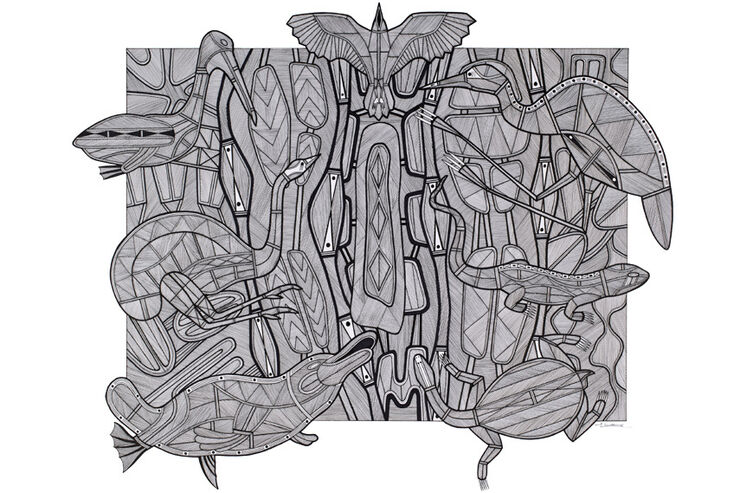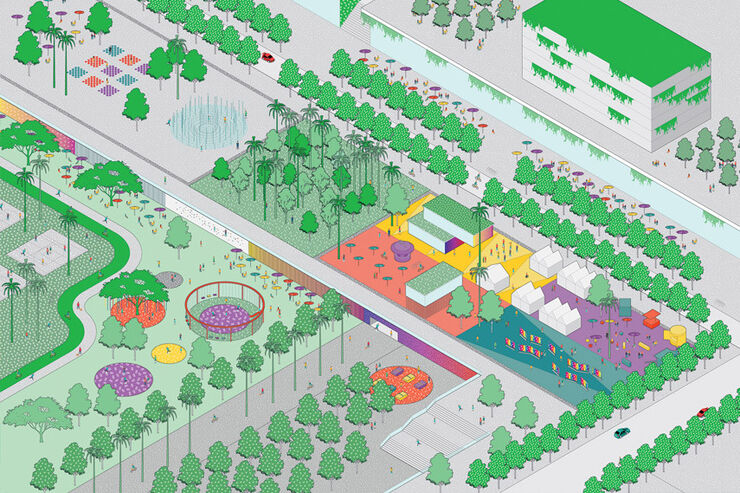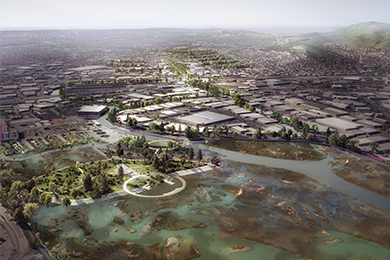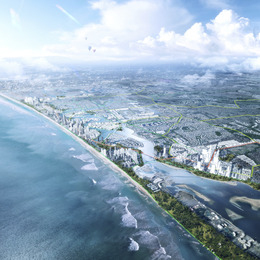The case for a national master plan
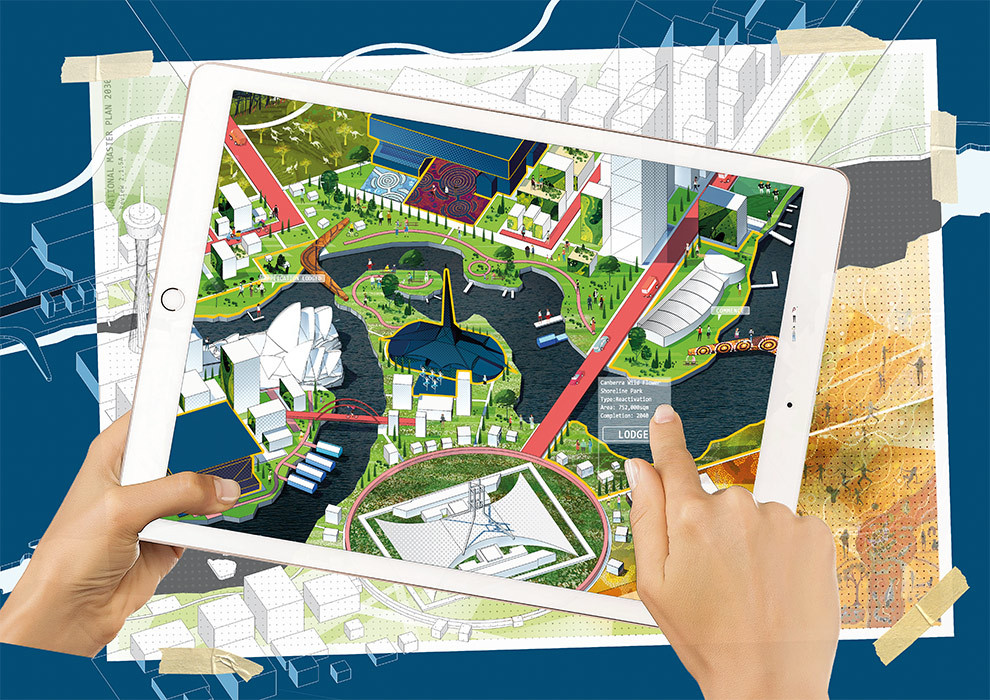
Could we master plan an entire country?
By Scott Davies with illustration by Choon Yong Heng
Master plans are wilful. They should establish a clear design vision and framework for development, that incorporates the entire site, often at city scale (or at least part of a city).
But a national master plan? Sounds ambitious. How could we master plan a country like Australia, which is the size of a continent, with varied state and federal jurisdictions? And why should we?
EARLY MASTER PLANS: FOR THE POWERFUL
Early master plans focused on the physical space of buildings and curated environments. They were often commissioned by a powerful man or group of men, and so established and reinforced power and authority. Examples include Georges-Eugène Haussmann’s plan for Paris, Peter Charles L’Enfant’s plan for Washington D.C. and Walter Burley-Griffin’s plan for Canberra.
These formal plans have large avenues that establish a hierarchy of movement throughout cities. Key axes and vistas extend from palaces and civic buildings.
People could see the places of power, designed to impress and awe, and the powerful could see the cities laid out before them.


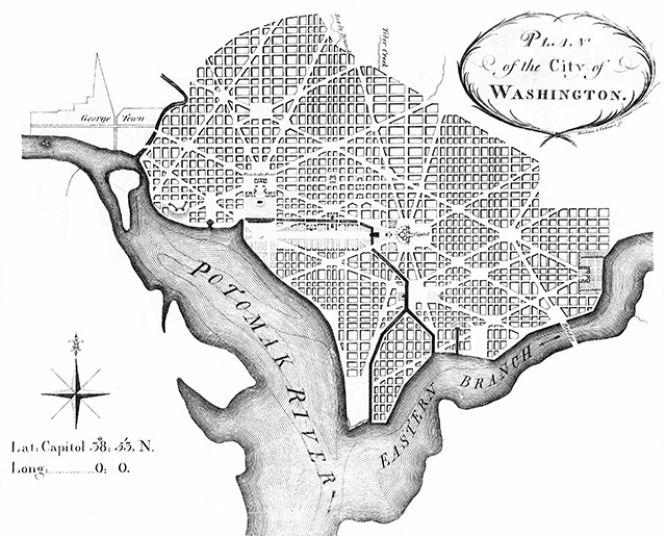
MODERNIST MASTER PLANS: FOR CARS AND EFFICIENCY
These early master plans created some of today’s most beautiful and visited cities, and set precedents for the city planning movements that followed, like The City Beautiful and Garden City movements.
Then a new breed of master plan came with the automobile age and the modernist project of efficiency and anti-ornamentation.
Just as Haussmann ripped up Paris’ slums and historic heart in the 1800s, modernist master plans of the early 1900s sought to rid cities of urban mess.
Le Corbusier’s Radiant City plan for Paris saw the ‘ideal city’ as an ordered environment for man. Though unrealised, Ville Radieuse’s utopia influenced cities big and small – from Brasilia, with its large towers and free car circulation, to Woden, Canberra.
Frank Lloyd Wright’s Broadacre City was a suburban counterpoint to Le Corbusier. Wright’s city of acre-sized plots prioritised car movement, and confined public spaces to the private realm.
But these planners forgot the most critical element of cities. They designed cities at the expense of people, instead of in their service. Modernist planning principles centre on a theoretical, ‘ideal’ way of living that in reality, doesn’t work.
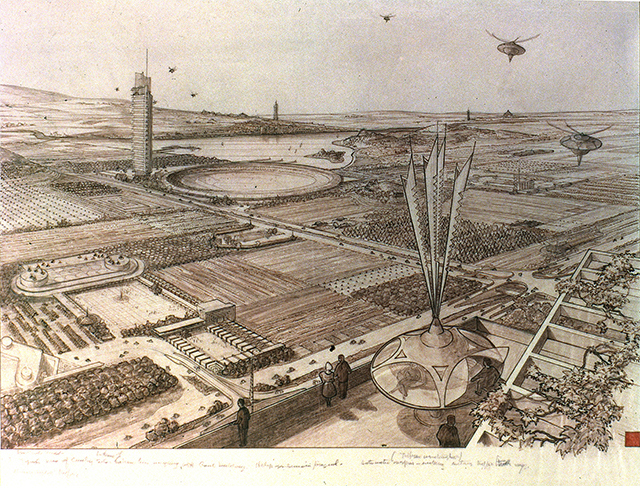
Cities have the capability of providing something for everybody, only because, and only when, they are created by everybody.
Jane Jacobs
ADVOCATES FOR ‘URBAN MESS’
So was born the urban advocacy of Jane Jacobs, whose activism began against plans for an expressway in downtown Manhattan. Jacobs’s seminal books critique top-down master planning in favour of community-driven city planning. She measures a city’s success by its diversity, and sees Greenwich Village as an exemplary place.
Cities are complex, and this is their strength. Richness of choice, opportunity, and people is inherently ‘messy’. Richard Florida champions this complexity as the backbone of the creative economy. When people rub shoulders in creative communities, this collaboration generates something elusive, yet powerful: ideas, innovation and growth.
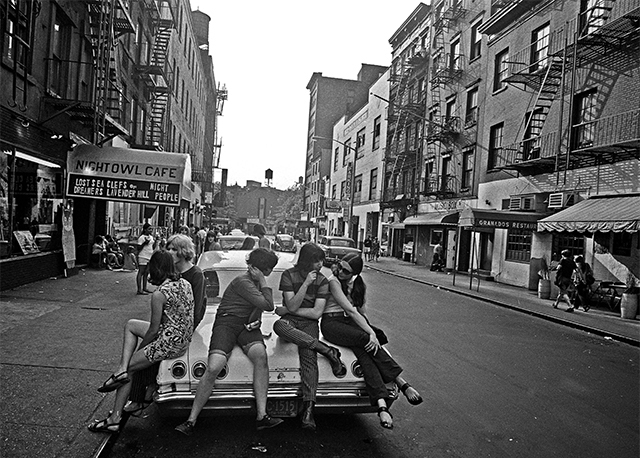
WHAT COULD A NATIONAL MASTER PLAN DO?
Throughout history, the master plan process proves to be fraught with unintended and negative outcomes. But if we learn from history, there can be a different way.
The national master plan could be a mechanism to think about systems that go beyond city and state borders. Masterplanning at this scale could address the complex problems of our time (global warming, biodiversity loss, resource depletion) by enabling us to implement their solutions (energy transition, closed loop ecological restoration).
DEFINING THE PROBLEM
At their core, master plans are about resolving an understood set of problems. So what are the problems for Australia, a rich nation with high standards of living?
The CSIRO’s ‘Australian National Outlook 2019’ says we’re at a crossroads. The report, prepared with leaders in business, academia and NGOs, indicates that business is not as usual. Australia risks ‘drifting into the future’ unless we respond to the challenges of a fast changing world. The report defines the problems that a national master plan would need to address in its framework for the future.
Australia has enjoyed nearly three decades of uninterrupted economic growth … However, there is no guarantee that this good fortune will continue into the future. The world is changing rapidly and Australia will need to adapt to keep up.
‘Australian National Outlook’, 2019, CSIRO
AUSTRALIAN NATIONAL OUTLOOK: 6 DEFINING CHALLENGES
LEARNING FROM COMMUNITIES
A national master plan could provide a touchstone for national decision making with people and the environment at its heart.
Instead of a top down approach, we should draw much more on the rich knowledge base of Australia’s communities, including First Nations peoples. For tens of thousands of years before European colonisation, First Nations people were the land’s custodians. Their deep connection to and understanding of place could lay the foundation for our nation’s custodianship, today and for future generations.
At a state level, the NSW Government Architect has started this conversation and identified themes to consider. We should learn from land management practices undertaken over thousands of years. We must balance productive and environmental needs, and depart from ‘single use’ products and ‘churn and burn’ practices.
To strengthen our collective narrative we need to stop designing for people and start designing with people. Community engagement is expensive and time consuming, but social media platforms provide accessible spaces for a national conversation, debate and the socialisation of ideas.
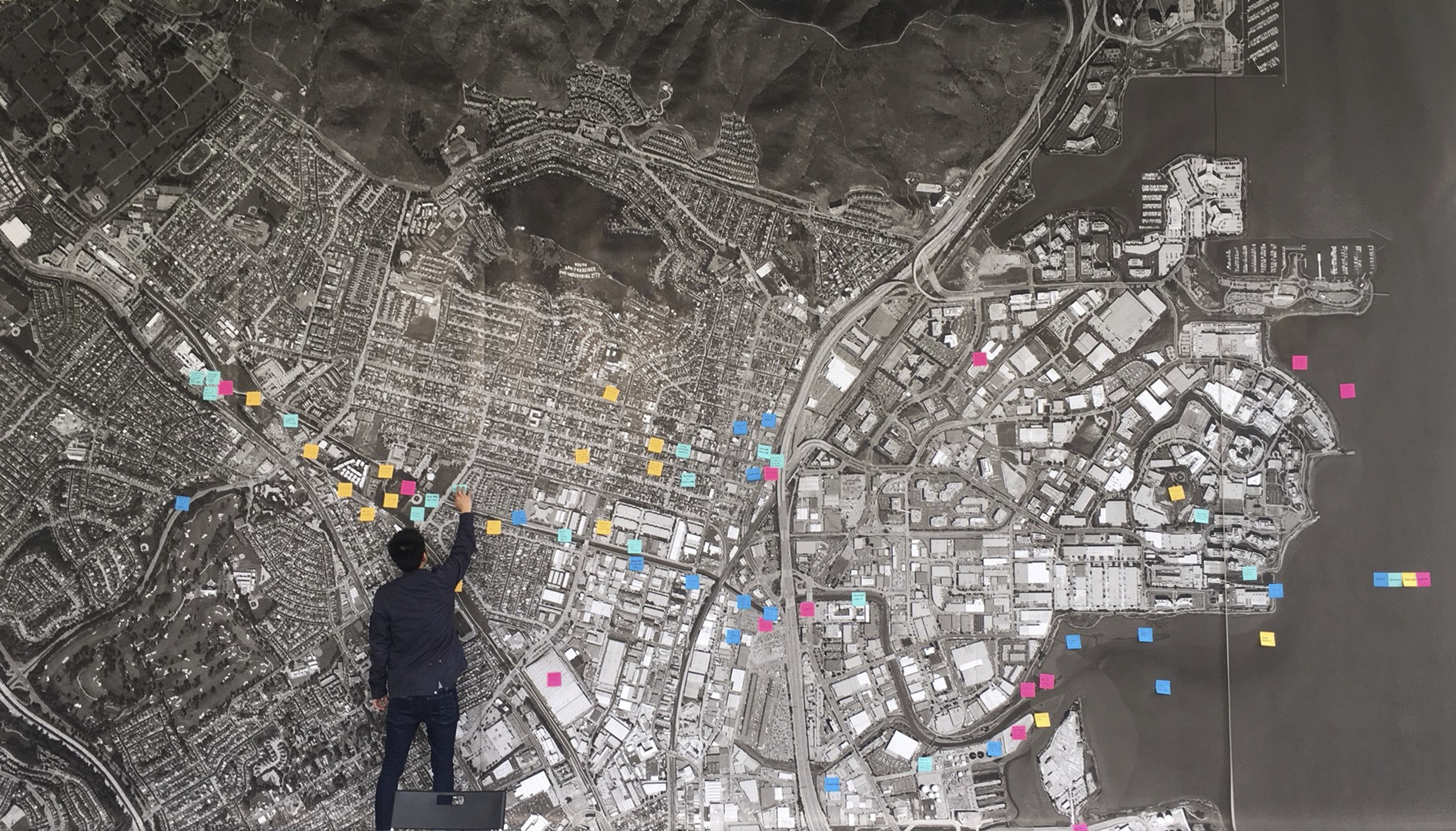
A RESILIENT AND SUSTAINABLE FUTURE
This year’s Global Climate Strike called on the world to change how we live or risk our sustainable future. A national master plan could provide a framework for that change. A plan that greens and cools cities and protects and regenerates biodiversity at the national scale. A plan that enables a collective shift to sustainable transport, energy and infrastructure.
By pure definition, a master plan is a ‘comprehensive plan of action’.
As designers, architects, urbanists, politicians, residents – this is our challenge. To design a national master plan not for its own sake, but as a framework for a sustainable future.
Scott Davies is a Senior Associate in our Sydney studio.

扫描二维码关注Hassell微信公众号

